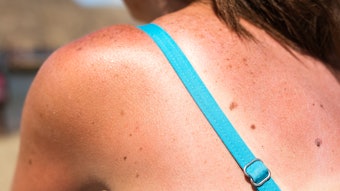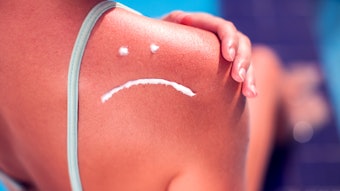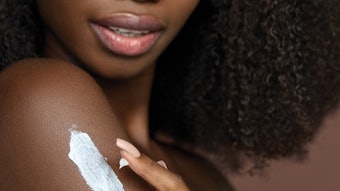Topical application of an antioxidant mixture can complement sunscreen use in order to protect the skin from UV damage, according to a new study.
Researchers from L’Oreal USA, alongside independent scientists from Dallas, Texas, studied the protective effects of a mixture of vitamin C, ferulic acid and phloretin. After applying the mix to the skin of ten volunteers, which was then irradiated with UV, the scientists concluded that the antioxidant mix significantly helped to protect against UV damage.
Phloretin—new to the sun scene
According to the team, a significant body of literature supports the protective role of both vitamin C and ferulic acid. However, phloretin, is a new addition to the antioxidant sun protection portfolio.
Previous studies on plant phenol compounds illustrated that phloretin, which is found in the flesh and skin of apples, is particularly good at getting through the skin barrier. As bioavailablity is one of the major problems plaguing many antioxidant compounds, this characteristic makes phloretin very attractive, the scientists explained.
In addition, some studies have suggested the presence of phloretin can enhance the uptake of other active ingredients applied to the skin.
The protective mix of CFerPhlor
The team looked at a number of parameters in order to investigate the efficacy of vitamin C, ferulic acid and phloretin (CFerPhlor), including skin reddening and markers of DNA damage. According to the study, CFerPhlor provided significant protection against erythema (skin reddening), the production of thymine dimers (the most common DNA damage caused by UV radiation) and the production of p53 (a protein induced when the DNA is damaged by UV radiation).
In addition, the topical application of the antioxidants brought the levels of MMP-9 (an enzyme that attacks collagen in the skin) down to normal non UV-radiated levels. A similar effect was seen with the Langerhans cells, whose morphology is altered by UV radiation. The CFerPhlor mixture appeared to completely prevent this UV-induced alteration.
Complement not compete with sunscreens
Finally, the team noted that as the antioxidant mix does not generally absorb rays within the UVA/UVB spectrum, any protective effects of the treatment are not due to sunscreen-like effects.
“These studies document that substantial photoprotection can be achieved by an antioxidant solution containing vitamin C, ferulic acid and phloretin,” concluded the authors.
Furthermore, as the antioxidants do not act as a sunscreen they are unlikely to interfere with the application of more traditional sunscreens. As sunscreen application to the skin’s surface is rarely uniform, the researchers believe treatment with antioxidants could significantly boost protection. Antioxidants protect from inside the skin, and as they stimulate the cell’s own defence mechanism they remain active for several days.
Source: Journal of Cosmetic Dermatology, Issue 7, pages 290-297, “Protective effects of a topical antioxidant mixture containing vitamin C, ferulic acid, and phloretin against ultraviolet-induced photodamage in human skin.” Christian Oresajo, Thomas Stephens, Peter D Hino, Robert M Law, Margarita Yatskayer, Peter Foltis, Sreekumar Pillai, Sheldon R Pinnell.
CosmeticsDesign.com, November 11, 2008










